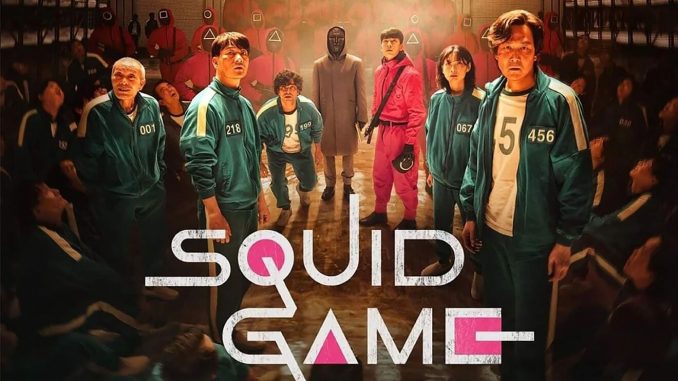
By Michela Arlia
Over the past week, an explosion in pop culture occurred within the world of television and streaming platforms, and it goes by the name of “Squid Game.”
When I first heard about the show in casual conversation, my mind initially pictured some kind of cartoon program or one of those low-production game shows that Netflix has previously created, like “The Floor Is Lava.”
Then, I was told it was a fictional show about indebted citizens who play games to win money with a deadly twist. Still, not inquiring further, my thoughts shifted to this show having a dystopian, Hunger Games-esque feel. At this point, I still didn’t know it was all in Korean.
I went through multiple phases of what this show may look like until I actively searched for it on Netflix. The one-minute preview shocked me as I realized I was very far off from my predictions. At the time though, it didn’t appeal to me enough to start streaming right away. With my long list of interrupted TV shows in the continue watching section or what I like to call the “streaming graveyard,” I put this show on the back-burner, making a mental note to get to it eventually.
Then, overnight, there were memes about the show, and everyone throughout social media and the news cycle seemed to be on the same page about “Squid Game” except for me. So naturally, feeling left out, I needed to jump on the bandwagon.
I started streaming “Red Light, Green Light,” the first episode, dubbed over in English but was quickly scolded by friends to watch with English subtitles instead, as it was better to hear the actions and emotions in the actor’s voices. They were not wrong there, and it made a huge difference.
Keeping up with reading in one language and listening to another simultaneously was a bit of a challenge for me to maintain details. But after the first few minutes, I adapted with ease. I took the text for what it was worth and read on as the basic rules for the game were explained, and the relatable struggles of everyday life were depicted within the characters.
The main character, Seong Gi-hun, is a financially struggling father trying to bond with the little time he has with his daughter in what seems like a split custody case. What started out as a story of Seong borrowing money and getting chased for not paying off debts turned into an episode rooted with issues like class structure, struggle, and gambling.
With something as simple as the playground game Red Light, Green Light, writers and creators of the show were able to create a killing spree controlled by higher and unknown powers. If any player moved under “red light,” they were instantly shot.
There is mystery and suspense around every corner, as the last half hour of the episode leaves you with many questions and little answers. Coping with the instant and spontaneous killings within the first game isn’t hard as a viewer since the graphics are not up to the highest quality. It’s the constant barrage of sounds, however, that creates a sense of chaos, ideally to make the viewer feel what the players may feel as stakes and tensions are raised through the roof.
While it is hard to create any guesses on how this will play out, it is certain that the writers are very skilled at where to play with the heart strings and mind, sometimes both at the same time. This all just translates into the experience of watching.
Now as Netflix’s most watched show in over 90 countries, the program is set to become the most-watched show in Netflix’s history in any language, according to a report by ABC News.
Needless to say, the first episode built up little by little to literally keep me on the edge of my seat, as cliché as that sounds. But not continuing on is not an option, as I’ll then feel as though I’ve opened Pandora’s box, but misplaced the key to shut it. And the best part is, now I understand a few of the memes.
